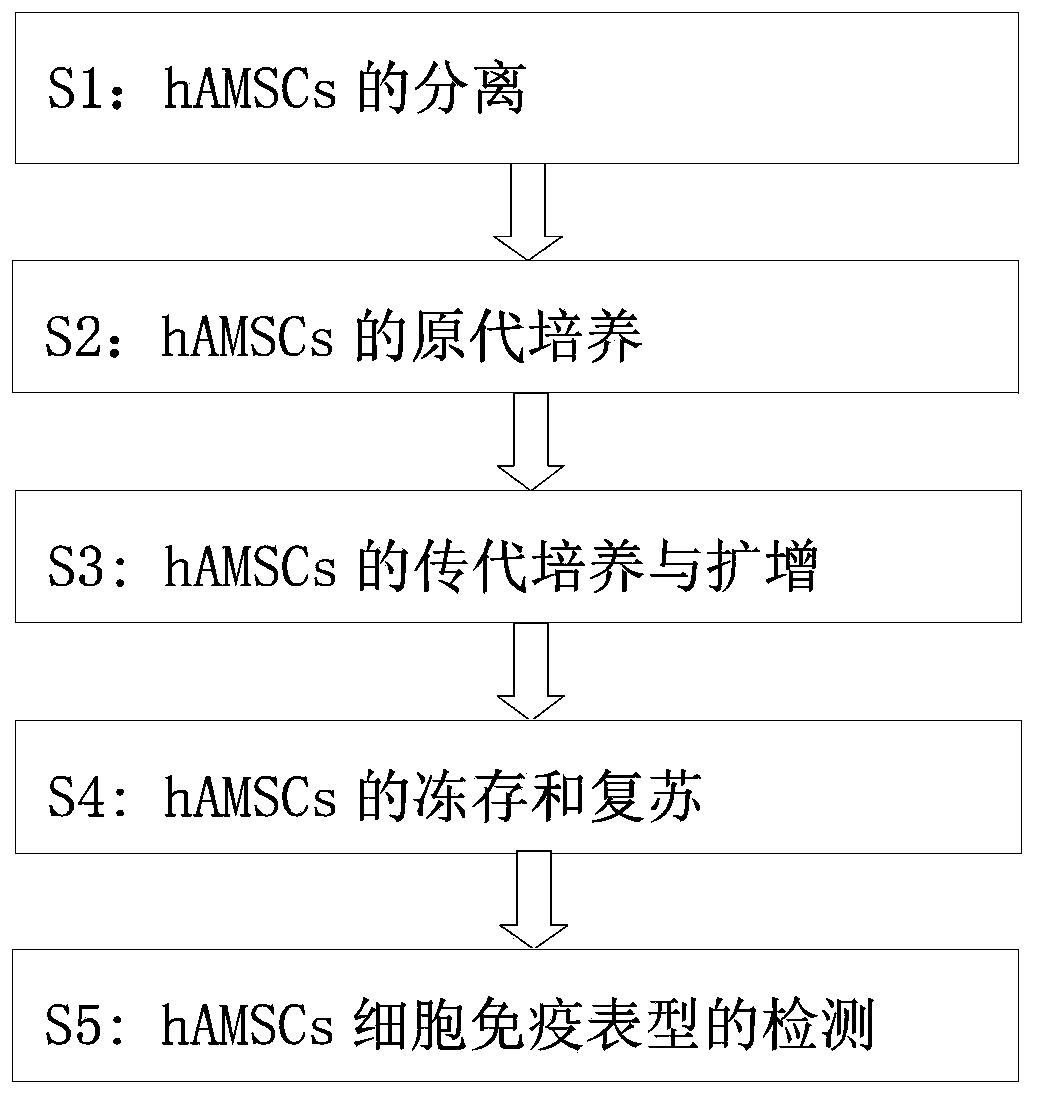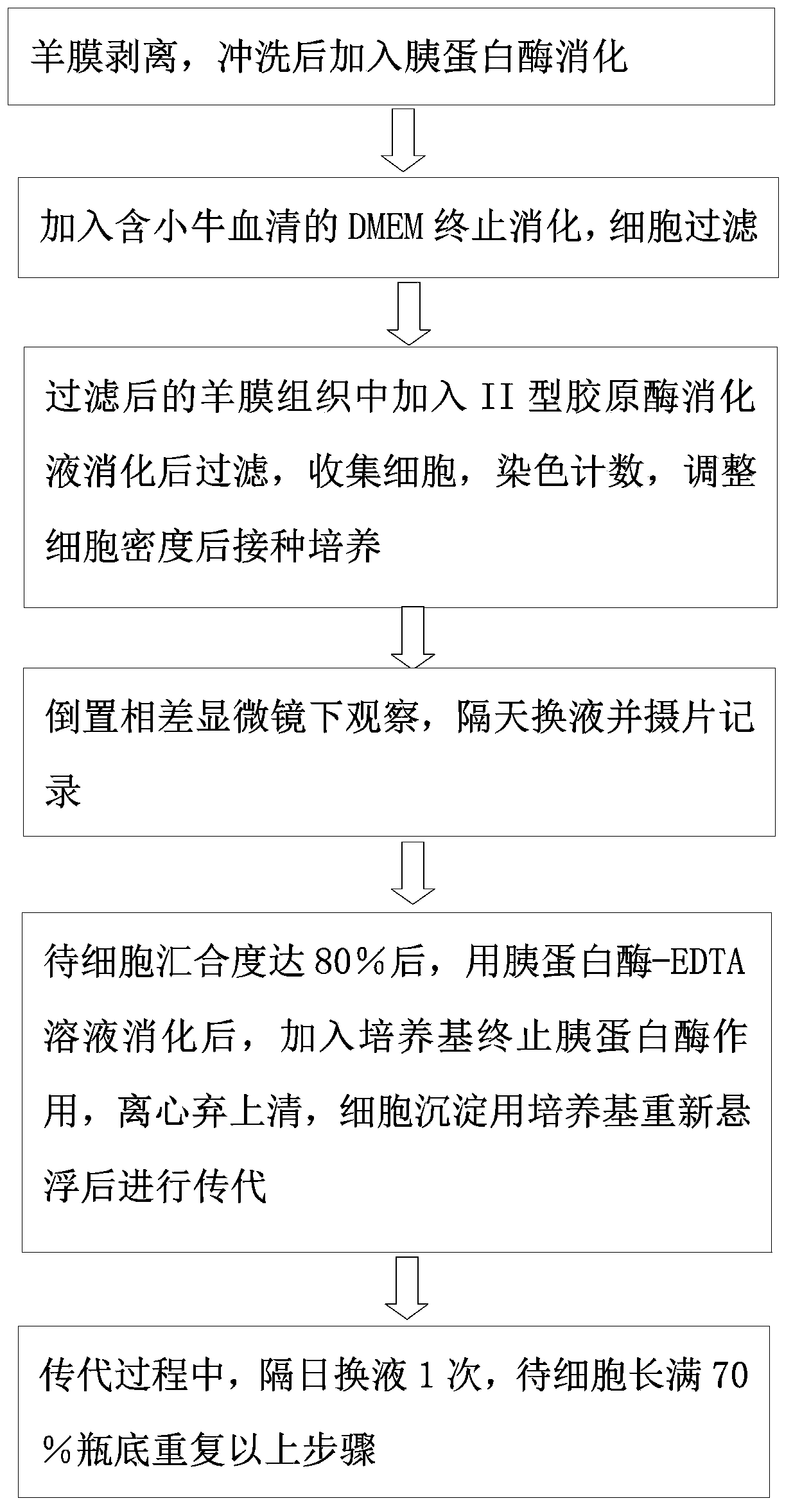Separation method for human amniotic mesenchymal stem cells
A technology of stem cells and separation method, applied in the field of separation of human amniotic mesenchymal stem cells and culture of human amniotic mesenchymal stem cells, can solve the problems of small number of cells, difficult to meet stem cell research, long time, etc., and achieve simple and fast operation. , the effect of effective separation and purification methods
- Summary
- Abstract
- Description
- Claims
- Application Information
AI Technical Summary
Problems solved by technology
Method used
Image
Examples
Embodiment Construction
[0015] Such as figure 1 As shown, the method for culturing human amniotic mesenchymal stem cells by enzymatic digestion combined with epidermal growth factor (EGF) in an embodiment of the present invention comprises the following steps:
[0016] S1. Isolation of human amniotic mesenchymal stem cells (hAMSCs):
[0017] see figure 2 As shown, this step is specifically as follows: take the fresh placenta discarded after delivery under sterile conditions (with the consent of the family members), use mechanical methods to peel off the amniotic membrane from the placenta tissue, rinse with D-Hank's solution several times to remove residual blood, and rinse the placenta. The final amniotic membrane was cut into about 1mm3 fragments with ophthalmic scissors, and 2.5g / L trypsin was added to digest at 370C for 10 minutes; DMEM containing 5% calf serum was added to stop the digestion, and the 200-mesh cell sieve was filtered after being gently blown and mixed; Add 1.0g / L type II colla...
PUM
 Login to View More
Login to View More Abstract
Description
Claims
Application Information
 Login to View More
Login to View More - R&D
- Intellectual Property
- Life Sciences
- Materials
- Tech Scout
- Unparalleled Data Quality
- Higher Quality Content
- 60% Fewer Hallucinations
Browse by: Latest US Patents, China's latest patents, Technical Efficacy Thesaurus, Application Domain, Technology Topic, Popular Technical Reports.
© 2025 PatSnap. All rights reserved.Legal|Privacy policy|Modern Slavery Act Transparency Statement|Sitemap|About US| Contact US: help@patsnap.com


